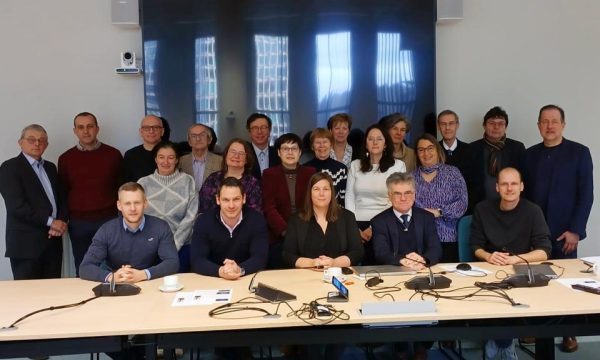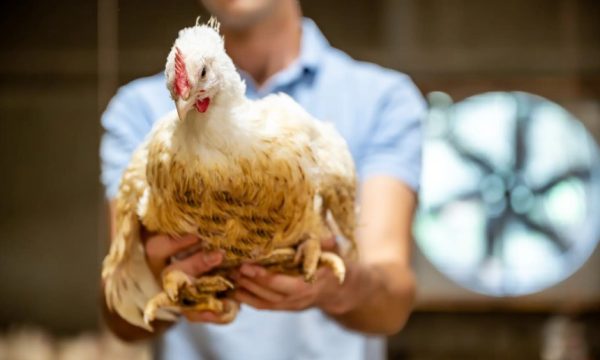Press release New tools for research into biofilms: sources of contamination can now be detected and dealt with faster

Undesirable bacteria present in biofilms can possibly be suppressed by placing harmless biofilm formers next to them. That is one of the innovative ideas that emerge from the ILVO-KUL doctoral research by Sharon Maes. Biofilms are a feared source of contamination in food companies and stables, for example, in the installations, water pipes and machines, even after and despite thorough cleaning, 'layers' can form. These are groups of bacteria that stubbornly stick to the surface by means of a mucus-formed matrix. Over time, the growing bacteria can come loose again and in this way spread their decay or disease-causing effect to animals, food products and ultimately to humans.
Stubborn sources of contamination

Some bacteria are very persistent and survive the usual cleaning and disinfection procedure. Under certain circumstances, the bacteria also produce a mucus layer with which they can adhere to a surface and protect themselves against the outside world. This collection of bacteria and their mucus-formed matrix together form a biofilm. Such biofilms are a source of persistent contamination and are difficult to remove. In farms this can lead to infections and diseases in farm animals, which in certain cases can also be transferred to humans. In food companies they can result in serious contamination of the end products. Nevertheless, until recently there was little information in Flanders about the occurrence and composition of biofilms in such companies.
To find out how often biofilms occur, which bacteria form them and what their decay or disease-causing potential is, a new method for sampling was needed. ILVO-KU Leuven researcher Sharon Maes therefore developed a protocol in which bacterial counts are combined with chemical analyses that trace the matrix components. She discovered that there are a number of common biofilm formers, but that the composition of biofilms is often very company-specific. She also tested the hypothesis that pathogens can be combatted by introducing harmless biofilm formers.
Contamination at company level
Sharon Maes sampled biofilms and residual contamination (after cleaning and disinfection) on food contact surfaces of 8 food companies and in drinking water systems of 5 broiler houses. In both cases the bacterial composition was variable and company-specific.
In food companies, both bacteria and matrix components (sugars, proteins, uronic acids) were found on 17% of the surfaces, indicating the presence of biofilms. Bacteria that were most identified are Pseudomonas, Microbacterium and Stenotrophomonas, but 60% of the identified genera was company-specific. Of the bacteria present, 88% had some degree of spoilage potential; the most common type of spoilage was the possibility of fat breakdown. Further research is needed to estimate the possible impact of these micro-organisms on spoilage. This requires more information about the reverse of biofilm formation, namely the release and transfer of bacteria from the biofilm on a surface to the food, and survival and growth in the food itself.
In the drinking water systems of broiler farms, indications for the presence of biofilms (bacteria + matrix components) were found on 63% of the sampled surfaces. The most identified species were Stenotrophomonas maltophilia, Pseudomonas geniculata and Pseudomonas aeruginosa. The biofilms again showed a mainly company-specific composition.
Biocontrol
In Belgium, problems were identified with persistent Salmonella Java infection in broiler chickens. Sharon Maes investigated the interaction between this persistent pathogen and the harmless biofilm producer Pseudomonas putida (this species is part of the natural microbiota in drinking water systems). For this she developed a new model that imitates biofilm formation on the inside of a drinking water system. Salmonella Java turned out to be a strong biofilm generator. However, when applied in the presence of Pseudomonas putida, biofilm formation by Salmonella Java was suppressed due to competition between the two bacteria. After these successful lab scale tests, the potential of Pseudomonas putida as a biocontrol organism can be further investigated. As a result, it might be possible in the future to monitor the contamination of broilers with, for example, Salmonella or Campylobacter (pathogenic microorganisms transmitted through the consumption of chicken meat to humans) and to limit food-related outbreaks.
New tools open future perspectives
In both the food and broiler sectors, this is as good as the first research that combines microbiological characterization with chemical determinations for detecting biofilms. "Due to the thorough microbiological characterization, which often does not happen in other studies, we have gained a broad picture of the current problem and what impact it can have," explains Sharon Maes. "Companies often have an idea about the total degree of contamination but none at all about which specific micro-organisms are present. With the knowledge built up in this study, it is easier to find a link between surface contamination and product contamination, so the source of contamination can be dealt with more quickly."
"The developed model can also be applied immediately in as a service provision," adds supervisor Koen De Reu. "By adjusting the parameters, different questions about biofilm formation within a specific company can be examined at lab scale. For example, the model can be used to test new and innovative cleaning and disinfection protocols for all kinds of material and company-specific biofilms. "The model is also used in a Flanders' Food follow-up project to prevent the effect of innovative coatings for stainless steel in food companies. of biofilm formation.


